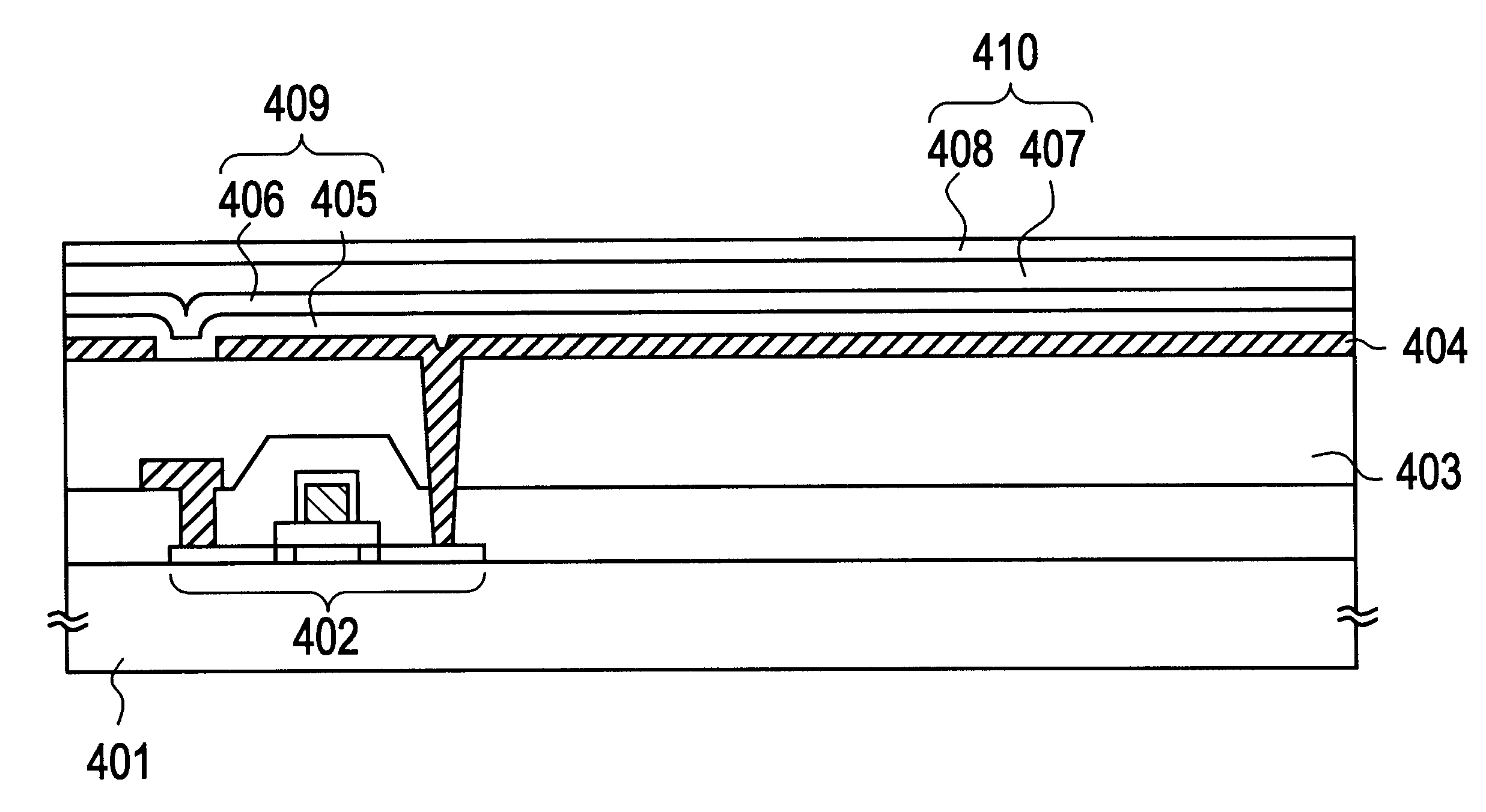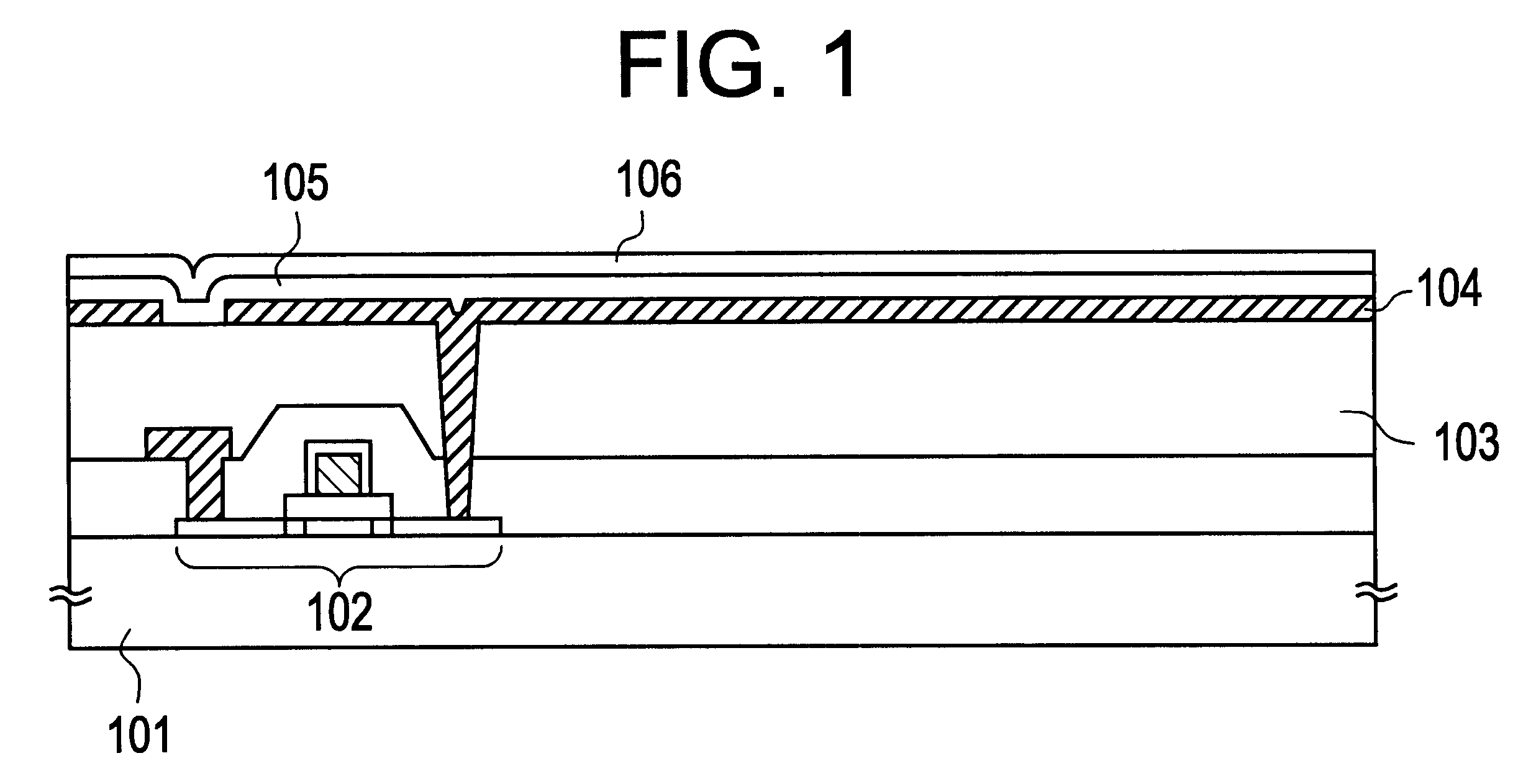Liquid crystal electro-optical device and electronic appliance
a technology of electrooptical devices and liquid crystals, applied in the direction of optics, static indicating devices, instruments, etc., can solve the problems of high light loss of reflective lcd, large volume of crts, weight and power consumption,
- Summary
- Abstract
- Description
- Claims
- Application Information
AI Technical Summary
Benefits of technology
Problems solved by technology
Method used
Image
Examples
embodiment 1
Now one embodiment of the present invention will be described. In this embodiment, explanation is made for a case that the invention is applied to a reflective LCD for a single plate type projector.
The reflective LCD of this embodiment is structured by pixels arranged corresponding to three primary colors of red, green and blue in an area corresponding to unit pixels. That is, the incoming light from a light source (white light) is passed through a color filter where it is turned into a light having a wavelength corresponding to each of red, green or blue color to be incident onto a pixel corresponding to the color.
Consequently, in this embodiment red, green and blue of wavelength light must be efficiently reflected by same-structured pixel electrodes. A flat reflection characteristic is required without having a dependency on wavelength within a visible light range (approximately 400-700 nm).
Also, in this embodiment explanation is made on a case of adopting a simplest two-layered s...
embodiment 2
This embodiment explains on a structure having two dielectric multi-layered films (i.e. dielectric film four-layered structure) wherein one multi-layered film is formed by a low refractive film and a high refractive film. Explanation is based on FIG. 4.
In FIG. 4(A), 401 is a substrate having an insulation surface and 402 is a TFT formed by a known means. The TFT 402 is covered with a planar film 403 over which a pixel electrode 404 is provided connecting to the TFT 402 through a contact hole. The pixel electrode 404 in this embodiment employs an aluminum film containing 1 wt % of titanium. This material is of course not limitative.
In this embodiment, over the pixel electrode 404 are formed a first dielectric film 405 (low refractive film), a second dielectric film 406 (high refractive film), a third dielectric film 407 (low refractive film) and a fourth dielectric film 408 (high refractive film). The first and third dielectric films used a material having a somewhat low refractive i...
embodiment 3
A pixel structure of this embodiment is explained with reference to FIG. 7. Incidentally, the structure is similar to that of FIG. 4 and the same parts to those of FIG. 4 are denoted by the same reference characters. This embodiment is formed, on a pixel electrode 404, one another a first dielectric film 701 (low refractive film), a second dielectric film 702 (high refractive film), a third dielectric film 703 (low refractive film), and a fourth dielectric film 704 (high refractive film).
The first and third dielectric films employed a material having a somewhat low refractive index (n.sub.L) of 1.2-1.6, while the second and fourth dielectric films used a material having a somewhat high refractive index (n.sub.H) of 1.8-2.5.
In this embodiment a dielectric multi-layered film formed by the first and second dielectric films is referred to as a dielectric (C) 705 for the convenience sake, while a dielectric multi-layered film formed by the third and fourth dielectric films is as a dielec...
PUM
 Login to View More
Login to View More Abstract
Description
Claims
Application Information
 Login to View More
Login to View More - R&D
- Intellectual Property
- Life Sciences
- Materials
- Tech Scout
- Unparalleled Data Quality
- Higher Quality Content
- 60% Fewer Hallucinations
Browse by: Latest US Patents, China's latest patents, Technical Efficacy Thesaurus, Application Domain, Technology Topic, Popular Technical Reports.
© 2025 PatSnap. All rights reserved.Legal|Privacy policy|Modern Slavery Act Transparency Statement|Sitemap|About US| Contact US: help@patsnap.com



